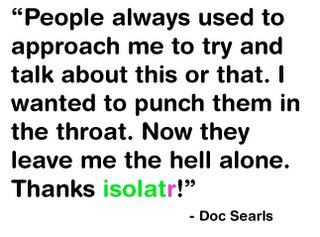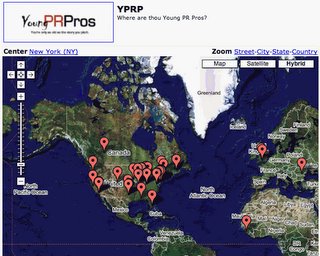Reader's Choice = Marketing Measure?
Most companies then make sure they send the link to the voting mechanism to customers, partners and other allies, encouraging them to pull the lever for them. Often, these voting mechanisms require nothing but checking a box for your "favorite" product in a category - no satisfaction rating, no quality measure, just a click is all required.
So, as a result of this process, you could argue that success is not entirely dependent on the quality of the products, but rather on the ability of the company to turn out voters. Readers' choice awards may then actually be a relatively decent measure of your success in marketing specifically to your existing customer.
I don't just mean getting them to buy more of your product, but actually getting them to want to tell others about it. Yes, insert customer as evangelist reference here. But I really do somehow doubt that most publications' actual readers rush to the websites to vote in these readers' choice awards, without a certain company or product already in mind.
I suppose this is where you could argue it goes back to the actual quality of the offering - your customers have to truly believe in the product in order for you to get them to make even the minor effort of visiting a website and clicking on your name.
And I'd agree that the offering's performance will most often bethe first determinant. But that alone won't inspire people to action. They have to get a warm, fuzzy feeling they get when they think of your company. And they have to be reminded of this feeling once the joy of the neat new toy wears off, or once the relief from the stressor that prompted them to purchase is long forgotten.
One of my clients does a particularly good job at communicating with the actual users of its products, and uses a blog as a key tool to accomplish much of this. It's not very pretty. It doesn't have bright colors or fancy feed aggregators or use del.icio.us tags. But it meets the audience's needs precisely - one that is made up almost entirely of systems administrators with no time for marketing blather nor love for flashy websites. It's updated frequently and is made available via RSS. It provides both company and technical product updates as well as larger market trends and stats. It's what they need, and little they don't. Every now and then, subtly enough, posted there are reminders for the readers on why they are using the product to begin with - stats on cost and time savings, case studies, user satisfaction ratings, etc. These are the things that give systems administrators the warm fuzzies.
In doing so, the client has finished laying the groundwork (that began with a strong product) for asking of the favor of casting a vote in a reader's choice award contest. It's created an exisiting dialogue that makes it much easier to say, "Hey, hope you liked the research we're sharing with you - by the way, we could use your help in winning an award," rather than having to say, "Hey, remember us, who haven't said a word to you since you got our boxed product up and running two years ago? Can you do us a favor?"
The client I'm talking about also sent out this week what I thought was an excellent email asking customers, partners and friends to cast a vote for his company's offering for a magazine's readers' choice award. It was light-hearted, friendly and got my attention.
The subject line: "Vote for Pedro." I certainly did. (Only once, I swear.)
By the way, I'd like to announce a call for nominees for the "From the Frontlines of PR" Reader's Choice awards for best PR bloggers over six feet tall with brown hair
who work in Washington, play the guitar and love the Cubs. Special consideration will go to those who should really post more often to their blogs.



